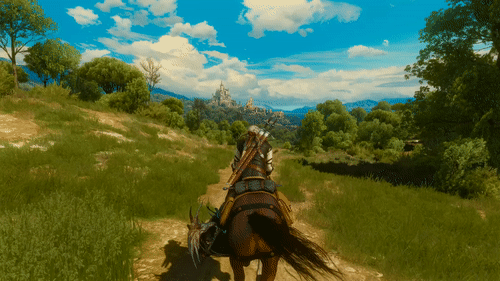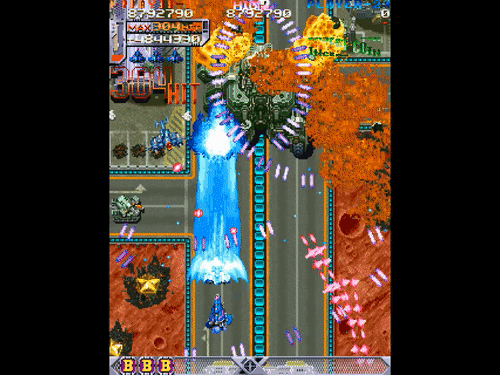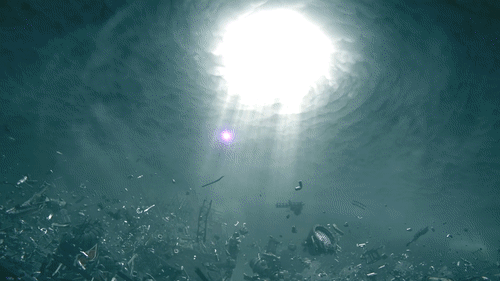Getting into a game can be hard. All games require some up-front time investment in order to find reward in their gameplay. Because the intrinsic value of gameplay doesn't always reveal itself at first, novelty is relied upon to hook the player. Exploration within a new game and the novelty of its newness (new to the player, not necessarily having been recently released) can help make the initial investment feel worthwhile. Once the novelty of a game wears off, the value of its gameplay must be engaging enough on its own.
But what aspects of gameplay increase a game's value? What aspects can decrease it? Mark from The Electric Underground argues that a game's value hinges on the dynamics of conflict, struggle, and payoff. I'll call this "CSP".
What is gameplay density?
CSP basically works like this:
- An objective is introduced.
- The player works to meet the objective.
- The player is rewarded for meeting the objective.
All games include some amount of CSP. The question of a game's value, according to Mark, is how well and how often it introduces conflict and how quickly that cycles through to payoff. Mark argues that a lot of games, especially mainstream AAA titles, stretch CSP cycles out over long periods of time. Like when the player has been given an objective and must spend time traversing the environment in order to get to the location where the objective can be met.
Mark criticizes games that stretch or space out CSP cycles as providing lower gameplay value than they might otherwise. Open-world games, he says, are clearly guilty of this, but he also calls out Mario titles. There are portions of both types of game where the player essentially just holds down the "forward" button to advance. Though the degree to which this sort of thing is needed varies from game to game and genre to genre, it always degrades a game's value.

I'd add that portions of games in which the player simply traverses the environment rely on novelty instead of CSP to generate interest. Some designers recognize that novelty eventually wears off and so include options like fast travel between known locations. This allows CSP cycles to be condensed per the player's preference.
By contrast, in Mark's preferred genre of shmups, CSP cycles are naturally clustered very closely together. New objectives are constantly introduced in the form of enemies and projectiles entering the automatically scrolling screen. The challenge of neutralizing or avoiding those threats impacts the player immediately as they must make quick choices or suffer the consequences. The payoff is simple and obvious: survival and continuation of the game.
The quick succession of CSP cycles within shmups makes for a high amount of what Mark calls "gameplay density". It's this, he argues, that gives shmups generally higher value than games of other genres.

What games have high gameplay density?
While I agree that shmups tend to exhibit high gameplay density, I think it's important to recognize that other types of games do so in less obvious ways. Take sandbox games, for example. Sandbox games don't wear CSP cycles on their sleeves like shmups do. That's because they don't consistently introduce conflicts. Instead, they incentivize them.
Let me explain. The payoff of a sandbox game's typical CSP is not, as with shmups, survival or score; it's discovery. A player's struggle is for the purpose of uncovering some new capability, item, or configuration that provides new possibilities or pleasurable aesthetics. The presence of conflict, therefore, is simply dependent on the player's recognition of something to be discovered and a corresponding interest in pursuing it.
Here's an example: Shawna Games' "Animal Crossing Cluttercore Able Sisters".
...I have no idea what that title means. But anyway, in this video Shawna builds an outdoor sewing area in Animal Crossing: New Horizons. The 15 minutes that she spends doing this, I would argue, exhibits very high gameplay density. Throughout, she voices aloud ideas of what she might want to achieve, makes changes to those ends, and steps back to admire the results. She often exclaims excitedly when she's found an aesthetic that she particularly likes. This is representative of nothing less than CSP cycles.

And it's not just sandbox games that incentivize player-created conflicts. They're just some of the purest examples, as shmups are with introducing game-created conflicts. Menu-ing, loot drops, and player creations can be (don't always have to be) evidence of incentivized CSP in many genres.
The problem with open-world games
As I previously noted, Mark criticizes open-world games for a lack of gameplay density. But I don't think this is quite fair. The problem with open-world games isn't necessarily that they provide fewer or stretched-out CSP cycles, it's that they try to straddle the divide between the shmup-like and sandbox-like approaches to establishing conflict.
Open-world games are often filled with objectives (conflicts) for the player to find; it's just a matter of talking to the right NPCs or progressing through the story. The spaces between and within those introduced instances of conflict are often filled with incentivized ones. The player may pursue opportunities for optimizing a character trait, exploring, etc. However, there are three potential pitfalls in this approach to game design.
First, it's always harder to do many things well without stretching yourself too thin. The same holds true for games. At its worst, open-world game design can manifest itself as either boring or convoluted. If boring, there may not be enough incentive to recognize conflicts in the form of opportunities for discovery. If convoluted, it may be difficult for the player to follow CSP cycles through to meaningful payoffs. Ideally, an open-world game should be both interesting and straightforward, a balance that is hard to achieve.
Second, open-world games tend to split their audience. Inevitably, part of the audience will have a preference for explicitly introduced conflicts. There is risk in being able to hold their attention during the longer stretches of time necessary to complete those CSP cycles. The other part of the audience will have more of a preference for less obvious opportunities for discovery. While they may appreciate the freedom offered by an open world, they may also resent having to progress through explicit objectives in order to expose more implicit possibilities. The best open-world games balance the needs of both audiences. Again, such a balance is hard to achieve.
Third, open-world games often rely on novelty to keep players engaged. This type of game is still relatively new and with room enough for improvement that many developers tout advances in AI, variability in story, and world size as selling points. But many players are starting to feel that the novelty of open-world design is wearing thin. While many still purchase and try to play through these games, they may not actually care much for them. So the genre invites more criticism than it probably deserves from players who simply haven't yet moved on.
Story lessens gameplay density
Many games tell a story. This is done through cutscenes, in-game dialog, and artifacts. Almost all genres feature games with at least some story. I would argue that it's the more story-heavy games that truly exhibit lower gameplay density.
Story within a game has two possible functions: to set up a conflict or to serve as payoff. Story can therefore be a tool to drive CSP. However, that time spent advancing a story should not be confused for gameplay. The crux of gameplay within a CSP cycle is the struggle. It's where the player actually exhibits agency over the outcome of the game. Without it there could be no CSP, no game. So even though story can be leveraged to drive CSP, more story equals less overall gameplay density.
Don't get me wrong. I'm not suggesting there's anything inherently wrong with story-heavy games—many gamers love them—but I think it's important to recognize that the value of those games comes less from gameplay density and more from narrative density.

The consideration of story-driven games, I think, helps illustrate the key importance of gameplay density: replayability. Shmups and sandbox games have high replayability because the density of CSP is such that when the player makes a choice between options at any given point, the nature of the next upcoming conflict may change. This makes for a lot of potential CSP combinations, as well as the potential for meta CSP cycles. In shmups, the possibility of a high score forms a meta conflict, repeated practice and strategizing forms the struggle, and bragging rights form the payoff. A game like Final Fantasy VII, while well-loved, may not command the same amount of long-term repeated play time as a game with higher gameplay density.
How much does gameplay density matter?
Gameplay density can be an important metric in evaluating the value of a game. But ultimately, I think the biggest component of a game's value is simply that of individual player preference.
Both introduced and incentivized CSP depend on the player's interest in both the struggle and the payoff. I, for one, cannot get into Animal Crossing: New Horizons. I don't really enjoy micromanaging inventory, crafting, and deciding specifically what to build. The game's aesthetics and possibilities just don't offer a compelling payoff. Regardless of its high gameplay density, it's a low value game to me. There are millions of gamers who would disagree with me, though, judging from its sales over the past year.
In his other videos and podcast, Mark often muses on how to get more players interested in shmups. While I sympathize with his position, I recognize that many gamers do not and will not enjoy the nature of the genre's offered CSP. As with fighting games, which introduce CSP in probably the most obvious ways possible, shmups are not for everybody. That's not to discourage Mark's or anyone else's efforts to evangelize them—there's almost certainly untapped market out there—but I don't think it's fair to tout them as having the highest gameplay density. Nor would that necessarily represent their value.
Gameplay density only matters to a point.